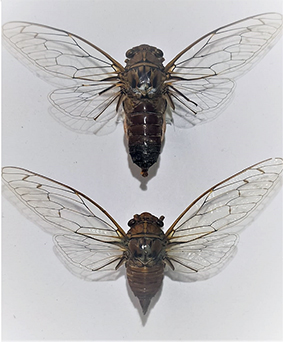New Cicada Species: Nagaland | 13 Oct 2021
Why in News
Recently, a new cicada species (Platyomia kohimaensis) was found in the Naga Hills of Nagaland.
- Earlier, two species of Cicadas Savazana mirabilis and Salvazana imperalis were discovered in Meghalaya.
Key Points
- About:

- Cicadas are hemipteran insects known for their loud, complex and species-specific acoustic signals or songs.
- Hemipteran insects, also called true bugs, have mouthparts used for piercing and sucking and have two pairs of wings.
- The new cicada species belongs to the Platylomia radha group described from the Naga Hills in the eastern Himalayas.
- It is a dusk singing, large-sized cicada that calls for a short window during the evening twilight hours. It timbalises in the form of a continuous and regular cackling.
- Timbal is a sound producing membrane in various insects.
- Cicadas are hemipteran insects known for their loud, complex and species-specific acoustic signals or songs.
- Significance of Cicadas:
- They are mostly beneficial. They prune mature trees, aerate the soil, and once they die, their bodies serve as an important source of nitrogen for growing trees.
- With their acoustic signatures, they act as indicators of a healthy forest ecosystem.
- Habitat:
- Most cicadas are canopy dwellers and are found in natural forests with large trees.
- The generic diversity of cicadas in India and Bangladesh ranks the highest in the world, followed by China.
- Threat:
- Large-scale clearing of natural forest land into human settlement and agricultural fields, along with burning of forests is behind the shrinking distribution of Cicada.
- Since it is considered a delicacy and fetches a good price, its unabated capturing and killing during its mass emergence poses a great threat to its survival.
